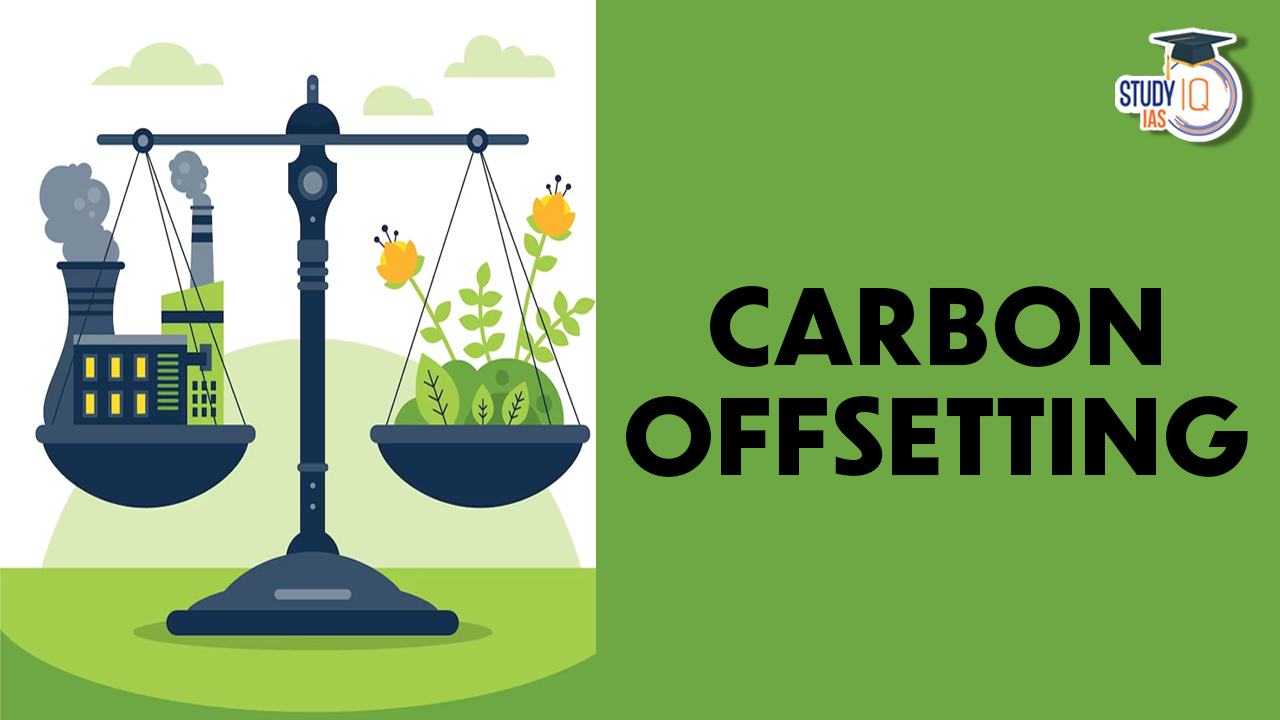Table of Contents
Context: A lawsuit was filed against Delta Air Lines, a major American airline, for making misleading claims about its carbon offsetting policies.
More on the News
- Delta Air Lines in 2020 marketed itself as the “world’s first carbon-neutral airline”, investing $1 billion on its carbon offsetting policies.
- However, these claims are now under scrutiny. A lawsuit was filed in California against Delta arguing that the airlines’ assertions were bogus, misleading and false. The lawsuit accuses Delta of misleading customers with its sustainability and carbon-neutrality pledges.
What is Carbon Offsetting?
- Carbon offsetting is a practice used by companies to compensate for their CO2 emissions by funding projects that reduce or remove an equivalent amount of CO2 from the atmosphere.
- The basic idea behind carbon offsetting is to balance out the emissions produced in one area by investing in activities that offset or counteract those emissions in another area.
Various Measures of Carbon Offsetting
- Renewable Energy Projects: Investing in renewable energy sources such as wind farms, solar power plants, or hydroelectric dams to replace or reduce the use of fossil fuels, thereby avoiding CO2 emissions.
- Energy Efficiency Initiatives: Funding programs that improve energy efficiency in buildings, transportation, or industrial processes, leading to reduced energy consumption and lower emissions.
- Reforestation and Afforestation: Supporting projects that involve planting new trees (afforestation) or restoring existing forests (reforestation) to absorb CO2 through photosynthesis and store it in the biomass.
- Methane Capture: Backing initiatives that capture and utilize methane emissions from sources like landfills, agriculture, or coal mines, as methane is a potent greenhouse gas.
- Carbon Capture and Storage (CCS): Investing in technologies that capture CO2 emissions from industrial processes or power plants and store them underground to prevent their release into the atmosphere.

How does Carbon Offsetting work?
- Calculation of Emissions: The organization calculates its greenhouse gas emissions by assessing various activities such as energy consumption, transportation, waste generation, or manufacturing processes. Emissions are typically measured in metric tons of carbon dioxide equivalent (CO2e).
- Purchase of Carbon Credits: Once the emissions are calculated, the entity purchases carbon credits or offsets from a broker, retailer, or project developer. Each carbon credit represents one metric ton of CO2e that has been reduced or removed from the atmosphere.
- Carbon credits, also known as carbon offsets, are permits that allow the owner to emit a certain amount of carbon dioxide or other greenhouse gases.
- Investment in Offset Projects: The funds from purchasing carbon credits are directed towards projects or activities that have a measurable impact on reducing or removing greenhouse gas emissions.
- Verification and Certification: To ensure the credibility of the offset projects, they often undergo verification and certification processes. These processes are conducted by recognized standards and third-party organizations that assess the project’s adherence to additionality, permanence, and other quality criteria.
- Carbon Neutrality and Compliance: By purchasing and retiring carbon credits equivalent to their emissions, individuals or organizations can claim carbon neutrality.
Concerns Associated with Carbon Offsetting
- Additionality and Permanence: Additionality refers to ensuring that the offset projects result in emissions reductions or removals that would not have happened otherwise. There have been cases where offset projects were implemented in areas where emissions reductions would have occurred naturally or were only temporary, leading to questions about the integrity of the offsets.
- Lack of Standards and Regulation: The carbon offset market lacks standardized and widely accepted guidelines, leading to variations in quality and credibility of offset projects.
- Greenwashing: There have been instances of greenwashing, where the offsetting is used as a marketing tool to create a positive image without meaningful emission reductions. Greenwashing undermines the credibility of carbon offsetting and can hinder genuine efforts to address climate change.
- Rebound Effect: Carbon offsetting can create a moral hazard, where individuals or organizations feel that by purchasing offsets, they have offset their emissions and no longer need to actively reduce their own carbon footprint.
- Complex and Uncertain: Accurately calculating emissions and determining the appropriate amount of offsets required to neutralize those emissions can be complex and uncertain.
- Limited Impact on Structural Change: Carbon offsetting alone is insufficient to address the urgent need for global emission reductions. It is crucial to prioritize and implement strategies that directly reduce emissions at their source.


 Daily Quiz 19 April 2025
Daily Quiz 19 April 2025
 Vehicle-to-Grid (V2G) Technology and its...
Vehicle-to-Grid (V2G) Technology and its...
 Waqf Act (Amendment) 2025: Key Highlight...
Waqf Act (Amendment) 2025: Key Highlight...





















